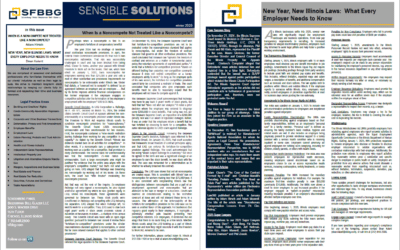Question: I am a retired executive of a public company and received significant fees during 2020 from serving as a member of the board of directors of other companies. Is it too late to establish a qualified retirement plan to offset my income and, if so, what type of plan should I establish?
Answer: It certainly is not too late. Until recently, the due date for establishing a qualified retirement plan for a tax year was the last day of the tax year for which the plan contributions were to be made. This meant that a calendar year employer had to establish a plan by December 31. The Setting Every Community Up for Retirement Act of 2020 (the “Secure Act”) extended the plan establishment date to the due date of the tax return for the year in question. As an individual, you must file your 2020 individual income tax return by April 15, 2021. Based on the Secure Act. you now can establish the plan on or before the due date of your personal income tax return. Moreover, if you extend the due date of your tax return to October 15, 2021, you have until that date to establish a qualified retirement plan for 2020.
One general impediment to any employer maintaining or adopting a qualified retirement plan is the obligation to make comparable contributions to the plan for employees. Because you presumably have no employees, all of the retirement plan contributions which you make are allocable solely for your benefit. Qualified retirement plans represent one of the few opportunities for taxpayers to benefit from a current income tax deduction and defer taxation on the contributed funds until the future.
Qualified retirement plans come in two basic types, defined contribution plans and defined benefit plans. Defined contribution plans represent the most common type of plan where contributions are made currently to separate accounts for participating employees who are entitled to the vested portion of their accumulated account value at the time they retire or leave the company. Profit sharing plans with 401(k) features are the most frequently sponsored defined contribution plans. Defined benefit plans, on the other hand, provide a specific benefit to covered employees as employers fund retirement plans to achieve the promised benefit. That is, the plan sets forth a specific obligation for employees, generally expressed formulaically, and the plan is funded accordingly to achieve that promised benefit. Once the most common type of retirement plan for employees, defined benefit plans are far less popular than they used to be in part because the funding costs can be significant and an employer must bear the risk of investment performance to accumulate the funds for the payment of benefits. Yet defined benefit plans can provide for substantially larger contributions, meaning larger deductions are available to offset income. For self-employed workers like yourself nearing retirement, you can make a large contribution to a defined benefit plan, have the contribution allocated solely for your own benefit and access the funds in due course without penalty.
Let’s assume you earn somewhere between $100,000 and $150,000 of director fees each year. Depending on your age, you can adopt a defined benefit plan which will allow you to contribute enough funds to offset most if not all of your director fees. As with any qualified retirement plan, the funds must be deposited in a segregated account, the earnings from which will not be currently taxed. Since you will not be required to begin withdrawing funds from your plan until you attain age 72 and because you can withdraw the funds over your IRS prescribed life expectancy, you can achieve a meaningful benefit from adopting and maintaining the plan. Furthermore, when you eventually retire and no longer earn director fees, you may be paying tax on the plan distributions you receive at a substantially lower tax rate.
While you inquired about director fees, the same opportunities exist for any other self-employed individual without employees. The self-employed business owner has an extraordinary opportunity to utilize a qualified retirement plan to generate current tax deductions and accumulate funds on a tax-deferred basis for the future without incurring a funding cost for anyone else. Qualified retirement plans represent one of the best forms of tax deferral.
The Tax Corner addresses various tax, estate, asset protection and other business matters. Should you have any questions regarding the subject matter or if you have questions you want answered, you may contact Bruce at (312) 648-2300 or send an e-mail to [email protected].



